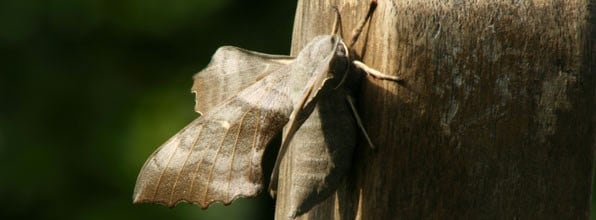How to control pests
Containment, rather than complete eradication, is the key to pest management in an organic garden. A certain number of pests have to be tolerated because they are food for the predators – kill all the pests and there is nothing for the predators to eat. These beneficial insects are the key to controlling pests although there are a number of other strategies you can also adopt. In my garden I grow plenty of annual flowers with nectar to attract predatory hover flies and wasps. Yes! Wasps eat both greenfly and caterpillars in copious quantities. Relying on chemicals can lead to long-term problems as the pests become resistant, non-pests are harmed and the environment is affected as the chemicals just don't break down.
Hand-pick pests
Although chemicals are thought of as being the easiest and quickest way to get rid of pests, it is often simpler and more effective to pick off the offenders when you see them. Such an example is the lily beetle. These shiny red beetles can decimate lilies but need to be directly hit by the chemicals for it to penetrate the shells. It is much quicker to just pick them off by hand and squash them. The larvae, which do the real damage, can be squirted off with a jet of water, which also washes away the messy frass they excrete. It is best to check your plants regularly, particularly the undersides of leaves where pests tend to congregate and hide before the infestation reaches such proportions that they start colonising the upper surfaces too. It is also worth checking at night with a torch as many insects, particularly slugs, snails and vine weevils, emerge mostly after dark. By tackling pest invasions early they can be dealt with easily.
Good for controlling. Caterpillars, vine weevils, lily beetles, slugs and snails
Put up barriers and traps
There are several different types of traps and barriers that can be used around the garden to help prevent pest outbreaks and damage, from netting to keep pigeons off brassicas, to fine-mesh, insect-proof netting each that will prevent carrot fly from swooping in and laying its eggs.
Live traps
By providing places in which the pest likes to congregate, you can reduce their numbers more efficiently. For example, rolls of corrugated cardboard make an excellent live trap for earwigs and pupating caterpillars that like to hide in the grooves. Similarly, up-turned pots stuffed with newspaper at the top of short bamboo canes will make an attractive hiding place for earwigs.
Good for controlling: Caterpillars and earwigs.
Impenetrable barriers
Grease bands painted on the trunks of fruit trees in autumn prevent the crawling, wingless females of winter moth from getting into the tree to lay her eggs. A band of Vaseline around the rims and bases of pots stops lots of crawling pests. Barriers which surround vulnerable plants are also used – fruit is grown in cages to stop birds feasting. Garden fleece and insect-proof mesh is ideal for protecting vulnerable vegetable crops from flying insect pests, and cut-down plastic bottles can be put over newly planted vegetables and bedding to keep slugs and snails away. Another slug and snail barrier often recommended is to surround vulnerable plants with a layer of crushed eggshells or other rough material that these pests prefer not to cross. In my garden they seem to cross anything, so I just grow a few more so that we can all be happy. Soft? Well, just a bit.
But I don’t like to use poisoned baits which can lead to the death of hedgehogs and thrushes that eat the poisoned molluscs.
Good for controlling: Aphids, slugs, snails, butterflies, moths and other insect pests.
Population-monitoring traps
These are traps which use pheromones to attract males that, believing it to be a female, fly directly into the trap and get caught on a sticky sheet. These traps were designed to help predict pest numbers in commercial orchards, so that if chemicals need to be applied they could be used at exactly the right time. In the organic garden, these traps can be used to control the numbers of males. Use one trap for every five trees.
Good for controlling: Codling moth.
Biological controls
These are tiny, often microscopic, creatures which attack and eventually kill their host insects. It is the stuff of horror movies as bodies are invaded and eaten from the inside out.
Good for controlling: Slugs and vine weevils, and in the greenhouse, whitefly, spider mites and other pests.
Organic pesticides
There is a range of organic insecticides which use natural fatty acids and so are not persistent in the environment. Some organic gardeners are happy to use them; purists are not.
Good for controlling: Aphids, whitefly, spider mite amongst others.




